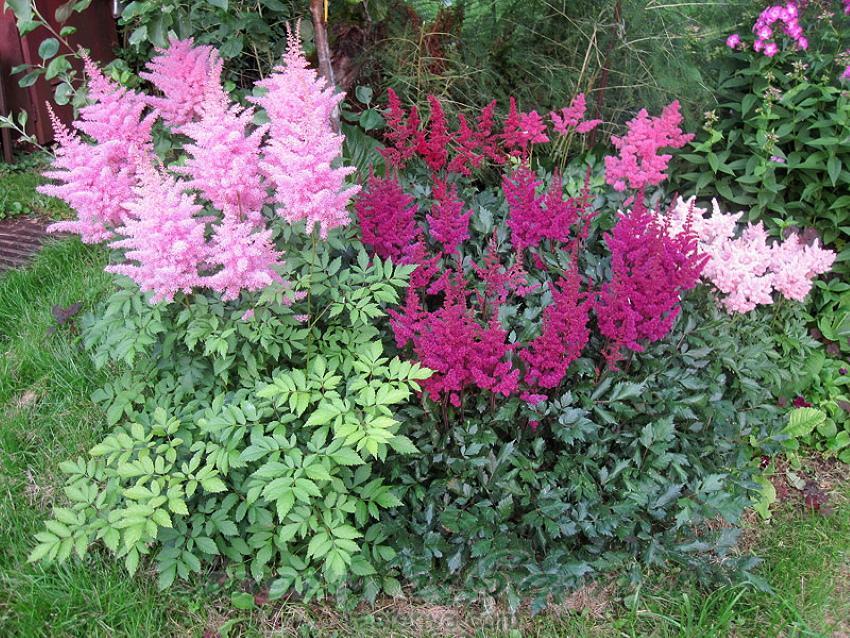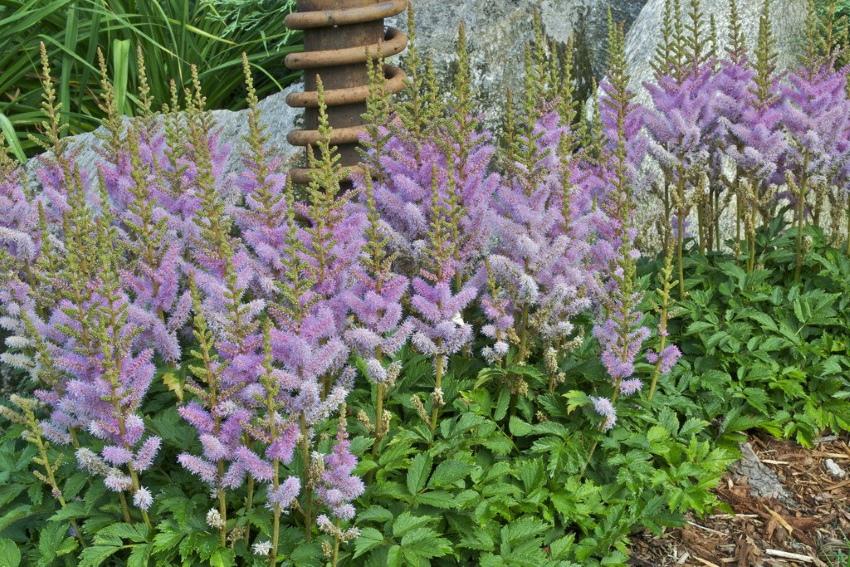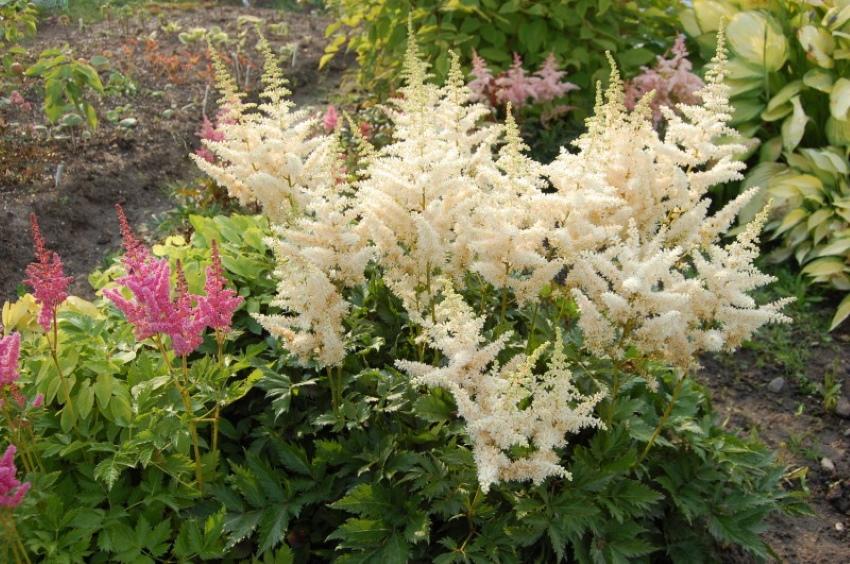Chinese Astilba will delight you with unpretentiousness and gorgeous flowering
 Lush rosettes with openwork leaves and fluffy bright panicles will decorate the site for more than one year. Chinese Astilba is one of the most unpretentious species of this perennial plant. It can be planted both in a sunny area and in partial shade. Moreover, this in no way affects the abundance of flowering. Resistance to drought and disease, a variety of varieties and colors and ease of maintenance - this is what will delight astilba.
Lush rosettes with openwork leaves and fluffy bright panicles will decorate the site for more than one year. Chinese Astilba is one of the most unpretentious species of this perennial plant. It can be planted both in a sunny area and in partial shade. Moreover, this in no way affects the abundance of flowering. Resistance to drought and disease, a variety of varieties and colors and ease of maintenance - this is what will delight astilba.
Chinese astilba - specific features of the plant

The flower has a powerful root system, while the upper part lignifies with age, and the lower part dies off. Instead, the root is renewed, and each season it grows a couple of centimeters above the soil.
The bush blooms in summer, releasing long, up to 60 cm, panicles. The flowers themselves are very small, but there are a lot of them, so the panicle is thick. The color depends on the specific variety and can be very different, from white and pink to purple.
The height of the plant itself also depends on the variety. There are compact species no higher than 50 cm, or large beauties with branches higher than 1.5 m, for example:
- dwarf astilbe Pumila and Vision in White up to 45 cm high;
- medium-sized varieties Pearl Rhine and Milk and Honey up to 70 cm in height;
- tall astilbe (more than 1 m) Superba and Dauria.
Having planted several species with different flowering times, you can admire astilba all summer. Early varieties will delight with panicles in June. Following them, in July, mid-flowering astilbe bloom. And the late varieties will end the season with August flowering.
How to care for a perennial
 Chinese astilba are not demanding either on lighting or on the composition of the soil. However, in practice, it has been noticed that she feels best in an openwork shade on loams near water bodies. When planting bushes, it should be borne in mind that this is a rather tall and lush plant. The distance in group plantings should be 50 cm. However, after 6 years the bushes will still grow, and they will need to be planted.
Chinese astilba are not demanding either on lighting or on the composition of the soil. However, in practice, it has been noticed that she feels best in an openwork shade on loams near water bodies. When planting bushes, it should be borne in mind that this is a rather tall and lush plant. The distance in group plantings should be 50 cm. However, after 6 years the bushes will still grow, and they will need to be planted.
Caring for a perennial is simple and consists of regular watering and seasonal feeding. In adult plants, you need to add soil to the growing roots. One of the main advantages of astilba is its high frost resistance. She hibernates without problems, while nothing special needs to be done. It is enough just to cut off the aerial part in the fall (it will die off anyway) and mulch bush.